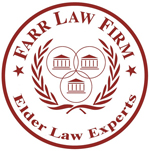 Q. I’m working on my estate planning documents and am putting lots of thought into them, especially what I want done with my ancestral home and my ancestral art collection. I have some very old and rare original artwork passed down from my ancestors that are quite valuable. I want to make sure they are preserved, cherished, and when I am no longer around to enjoy them, I’d like them to be donated to a university museum or a museum that is free to the public. They are worth quite a bit, but I do not want them to be sold or placed in a museum that charges admission. My ancestral home, where I vacation with my three children and seven grandchildren, along with many other family members, is also quite historic. I want my children and other family members to be able to continue to use this vacation home after my death, but I worry whether they will be able to afford to continue paying for all the upkeep. I’m also thinking at some point of turning my ancestral home into a free museum for my art collection. Once I determine my exact wishes, if I put my specific wishes in my estate planning documents, can I ensure that my exact wishes will be followed?
Q. I’m working on my estate planning documents and am putting lots of thought into them, especially what I want done with my ancestral home and my ancestral art collection. I have some very old and rare original artwork passed down from my ancestors that are quite valuable. I want to make sure they are preserved, cherished, and when I am no longer around to enjoy them, I’d like them to be donated to a university museum or a museum that is free to the public. They are worth quite a bit, but I do not want them to be sold or placed in a museum that charges admission. My ancestral home, where I vacation with my three children and seven grandchildren, along with many other family members, is also quite historic. I want my children and other family members to be able to continue to use this vacation home after my death, but I worry whether they will be able to afford to continue paying for all the upkeep. I’m also thinking at some point of turning my ancestral home into a free museum for my art collection. Once I determine my exact wishes, if I put my specific wishes in my estate planning documents, can I ensure that my exact wishes will be followed?
A. The “bottom line” answer to your question is no. In a complex situation such as you have described, you can almost never ensure that your exact wishes will be followed because it is virtually impossible to predict all the different variables that will come to play in the future that could thwart your stated wishes. For example: What if some or all of your family members don’t want to use the vacation home after your death? What if they can’t afford to keep it up, and you fail to leave enough money in trust to pay for the upkeep indefinitely? What if the local or state government condemns your ancestral home due to safety issues or right-of-way issues, such as the state wanting to put a road through your property? In order to truly have a comprehensive estate plan that will be followed as long as possible, you need to think through all of these possible issues and make a contingency plan to cover each of these foreseeable issues. Even then, there are always unforeseeable issues that might arise in the future that could interfere with your stated wishes.
Your situation actually sounds a bit similar to a philanthropist, Albert C. Barnes, who owned a valuable art collection. Similarly, he wanted it to be used for educational purposes, but unfortunately things didn’t turn out exactly as he had planned.
Albert Barnes Had Specific Wishes for His Art Collection
Albert Barnes rose from humble beginnings to earn a great fortune as a successful chemist and entrepreneur. Over three decades, he invested in collecting original artwork and wound up acquiring one of the world’s most valuable art collections. As an art lover and collector, he was passionate about arts education and wanted his collection (which included works by Renoir, Cézanne, Matisse, Picasso, and Van Gogh, among many other masters of painting and sculpture) to be used for students to enjoy and study. The last thing he wanted was for his art to be in a large urban museum where patrons are charged lofty admission fees.
Barnes was very detailed in his estate planning documents about what he wanted done with his art collection. In 1922, when Barnes was 50, he set up the Barnes Foundation and hosted the art in Merion, Pennsylvania, in an intimate space owned by his family’s foundation. While he was alive, the art was enjoyed by small groups of students passionate about art theory and others who were eager to learn, as he intended. Barnes clearly stated that all the paintings in the collection were to remain in the exact location and arrangement in the foundation’s buildings in Merion upon his death.
Barnes passed away unexpectedly, in 1951, from injuries sustained in a car accident. Unfortunately, as the years went by, the foundation determined they couldn’t generate enough revenue to sustain the collection to Barnes’ specifications in his estate planning documents. In particular, the trustees wanted to move some of the paintings to Philadelphia, either on loan to established museums or in a new location of the foundation. They believed being in or near a major metropolitan area would generate more traffic and revenue. They also wanted the curators to be able to rearrange how some of the art is displayed. The Pennsylvania courts generally agreed to the requests, with the most recent decision being delivered in August. The art was ultimately moved to Philadelphia and was only made available to visitors willing to pay the price of admission, which is exactly what Barnes didn’t want.
The short film “Donor Intent Gone Wrong: The Battle for Control of the Barnes Art Collection” features former Barnes student and attorneys Nick Tinari and John Anderson, who authored a book about the Barnes case, “Art Held Hostage: The Battle over the Barnes Collection.” The film also includes donor intent experts Joanne Florino and Dr. Kathi Badertscher who offer advice for donors who wish to protect their philanthropic legacies. Florino is a distinguished fellow in philanthropic excellence and Badertscher is director of graduate programs for the Lilly Family School of Philanthropy at Indiana University–Purdue University Indianapolis.
“For Albert Barnes, it’s very clear, the last thing he wanted to happen to his art is exactly what happened,” said Florino. “I think he tried very hard to put protections in place. But even he didn’t anticipate everything that could happen.” According to Florino, a donor’s intent “is what gives integrity not only to the gift being made at the time but to philanthropy.” The proper expression of donor intent goes beyond a list of philanthropic priorities and includes a discussion of a donor’s philanthropic values. Florino stressed the importance of having a very clear gift agreement in writing and carefully assembling a board that is aligned with your philanthropic mission, “so you are leaving behind a core of people who are committed to following your example.”
Badertscher suggested the rigid restrictions Barnes put into effect may have actually undermined his overall goal of protecting his intent. “We’ve all built something we care about and it’s reflective of our individual identity. We somehow want to see that honored,” said Badertscher. “Sadly, the ways [Barnes] went about trying to build his legacy ended up making it even harder to leave a legacy.”
Can You Ever Fully Ensure Your Wishes Are Followed?
Collections and vacation homes, such as yours and those belonging to Mr. Barnes, are specialized and unique. So, when considering your estate planning, it’s important to think about what you want to require of your trustees, and to think through all of the possibilities of things that might happen, whether shortly after your death or decades after your death. If you’re not planning on selling your collection, what will your trustees have to deal with to make your wishes a reality?
Here are some small suggestions so your collection and your ancestral home have the greatest chance of being handled in the way you wish:
- Take an inventory of the collection: A thorough and updated inventory will help your beneficiaries understand the scale of the collection and where the items are located. This doesn’t have to be high-tech. Some people use an Excel spreadsheet, and it works well.
- Make sure that the inventory stays up-to-date and contains detailed information about the items.
- To the extent possible, it’s also a good idea to log valuations along with the items’ description.
- Have honest conversations: It’s important to have a detailed plan in place, with multiple contingencies, so your wishes are more likely to be carried out over the long term. Having honest conversations now is important for everyone and helps provide peace of mind for you and details about your wishes for the future.
- Be specific about your wishes but remain flexible, remembering that almost everything changes over time. It seems you want your sculptures to go to a museum for preservation. Make plans about where you’d like them to go. Try not to be as rigid as Mr. Barnes was, and be sure to plan for any contingencies. Be clear in your estate planning documents and leave detailed instructions behind for your loved ones so they know what to do.
- A Forbes article on the Barnes case talked about the importance of being flexible, stating, “The Barnes Foundation saga shows the importance of avoiding conflicts in an estate plan. A plan also shouldn’t be inflexible and have many restrictions. Otherwise, someone’s likely to resist or circumstances will change. Either event could trigger legal action. The courts are likely to balance the interests of the different parties and find the plan should change because the developer of the plan didn’t anticipate current circumstances.”
- Choose the right trustee(s): Most people choose either a friend or family member, a professional trustee such as a lawyer or an accountant, or a trust company or corporate trustee for this key role. Please read our article on the subject for some considerations in making this critical decision.
- Keep your estate planning documents up-to-date to avoid unintended consequences. Changes to the law and significant events in your life could alter the way that you originally meant to apportion assets in your estate planning documents. The only way to ensure that your estate plan truly reflects your current wishes is to have your documents reviewed and updated frequently. We recommend you have your estate planning documents reviewed every three to five years! Click here for instances where you should update them!
Some good organization and pre-planning can preserve your wishes for years or decades to come! For more details on this subject, please read my article “Estate Planning for Your Valuable Collections.”
Plan in Advance So Your Wishes Are Met
It is of course important to have an experienced estate planning attorney, such as those at the Farr Law Firm, create your estate plan — your will, trust, account titlings, and beneficiary designations. As mentioned in the article, it is also important to review your estate plan at least every three to five years to make sure it continues to reflect your wishes. We also recommend that our clients participate in our firm’s Lifetime Protection Plan® to ensure that your documents are up to date each year when changes in the law occur. Learn more about it here.
If you have not done your Estate Planning or Retirement Planning or had your planning documents reviewed this year, please call to make an appointment:
Northern Virginia Estate Planning: 703-691-1888
Fredericksburg, VA Estate Planning: 540-479-1435
Rockville, MD Estate Planning: 301-519-8041
Annapolis, MD Estate Planning: 410-216-0703
Washington, DC Estate Planning: 202-587-2797












